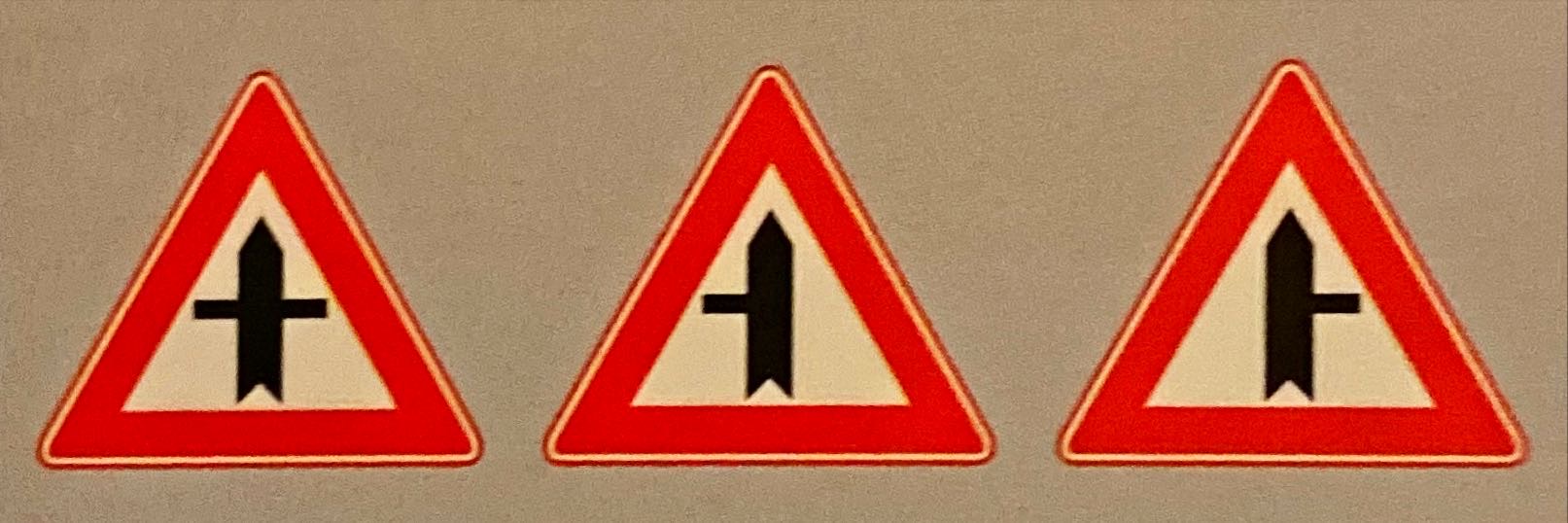Created: 2023-11-19 17:53
Connections:
Different types of intersections
Intersections different on appearance and the rules regarding priority.
Complete intersection
The mos classic version of an intersection. The roads intersect at a 90 degree angle.
Other intersection types
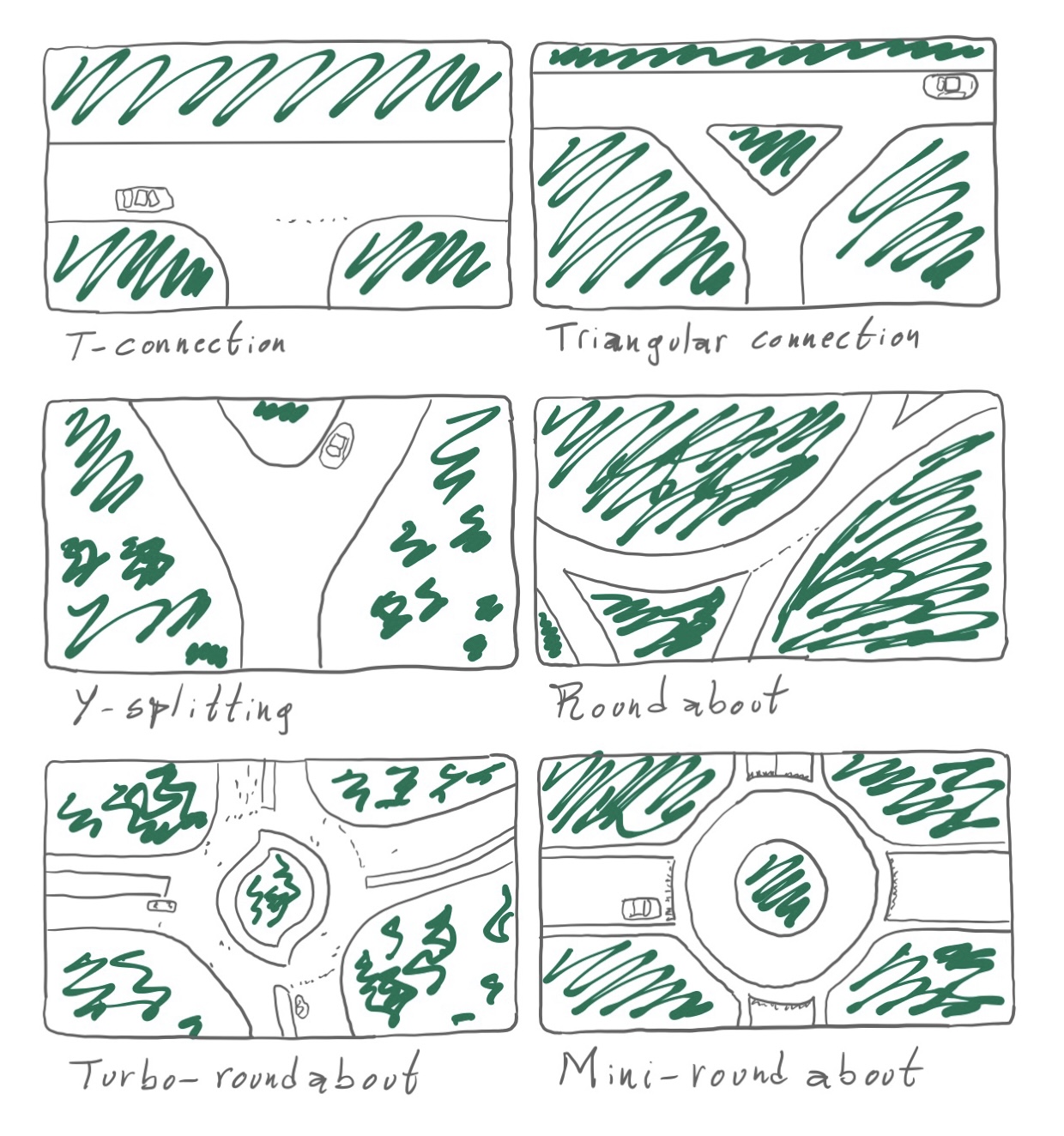
Level or grade-separated intersection
Gelijkvloers kruispunt and ongelijkvloers kruispunt
A ”Gelijkvloers kruispunt” refers to a level intersection where all roads come together at the same height or level. It means traffic from different directions share the same space, and control systems like traffic lights or signs are commonly used. An ”Ongelijkvloers kruispunt” is a grade-separated intersection. Here, roads cross each other at different levels or heights, facilitated by features such as bridges or tunnels. This design separates traffic flow and can improve safety and efficiency.
At a level intersection you can drive onto an intersecting road on the left or right.
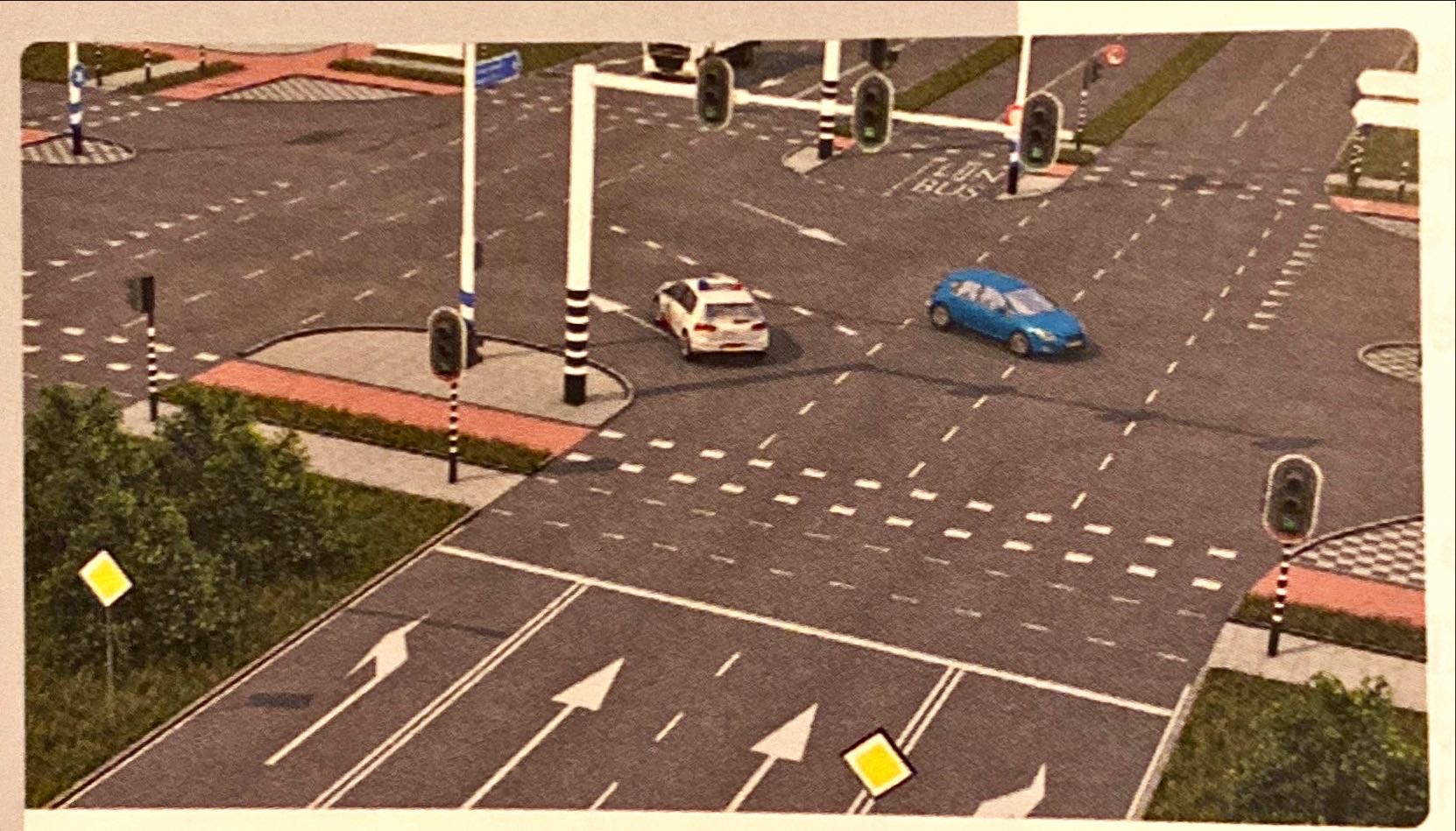
At a grade-separated intersection, the roads cross each other at different locations. Unequal-level intersections are more common on highways/freeways.
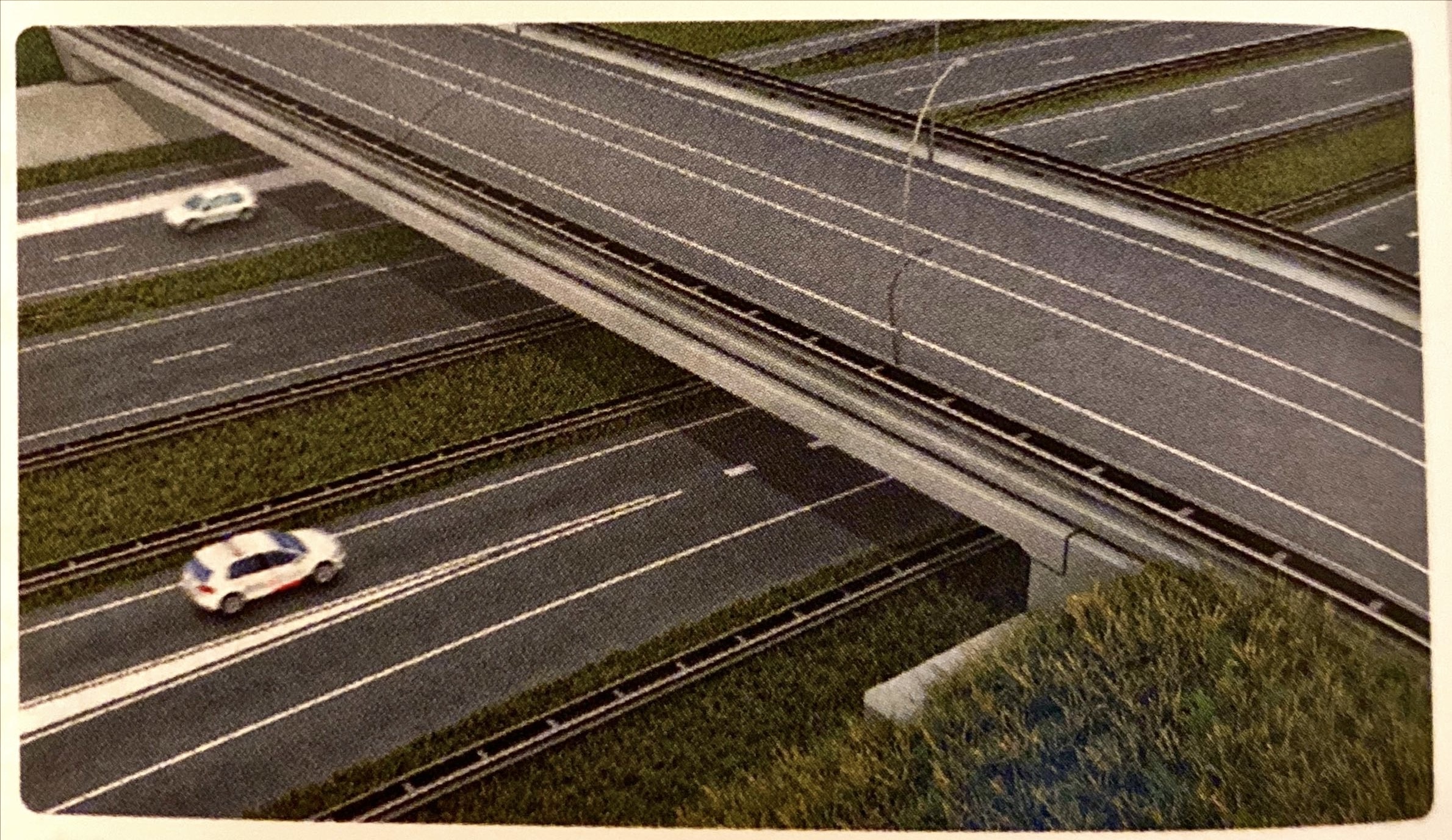
Equal intersection
Two roads intersect and there are no signs or markings to determine priority. The main rule applies.
Dangerous intersection
Sometimes and equal intersection is seen as extra dangerous. Might be due to (a combination of) the following:
- The overview is obscured
- The permitted speed
- The different types of road users who use the intersection
Sign J8 warns about these case. This is a call to approach the intersection with extra care and look around more than normally.
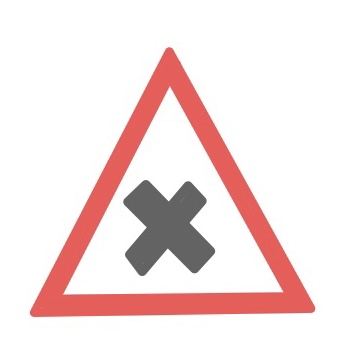
Priority intersection
Signs at intersections might indicate who should have priority. B3, B4, and B5 give priority to drivers from the left and/or right (including trams).
